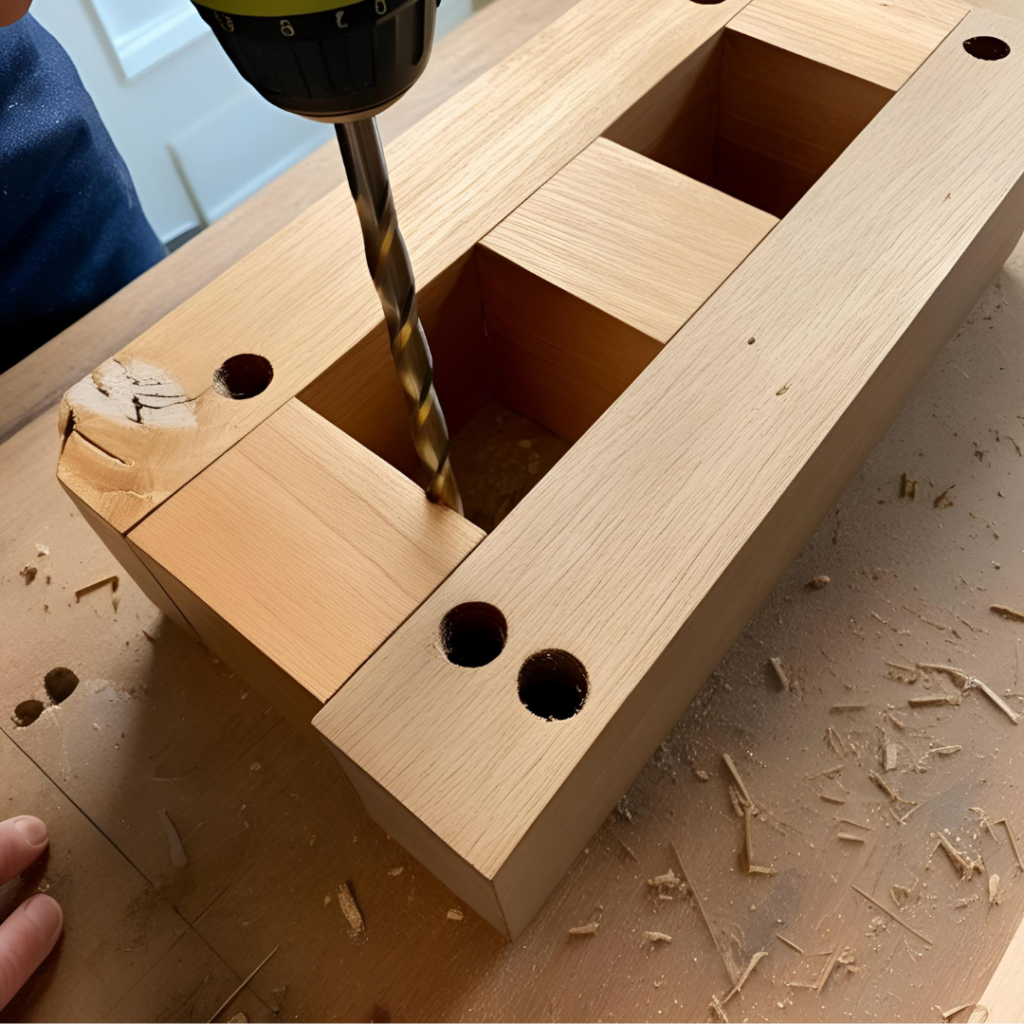One doesn’t have to do a lot of woodworking before coming up against the necessity of creating tight miter joints. Many simple projects require miter joints at some point, creating challenges for new and experienced woodworkers alike. While cutting a miter joint doesn’t need the degree of skill that dovetails do, getting a tight miter joint without any gaps has led many woodworkers to despair.
Mastering Miter Joints: Tips for Perfect Corners
Many woodworkers, whether beginners or experienced, face the challenge of creating tight miter joints. While miter joints don’t require the same precision as dovetails, getting a seamless fit without gaps can be frustrating.
Proper clamping is key to a strong miter joint. I’ve tried assembling miters without clamps, and I can confidently say it’s not worth the trouble. Clamping holds the pieces in place, ensuring precise alignment and a tight fit.
Luckily, several types of clamps are designed specifically for miter joints, and some general-purpose clamps can also be adapted for this use. The best choice depends on what you have and what works best for your project. While most clamps serve the same essential function, some are better suited for specific tasks.
Best Methods for Attaching Miter Joints
Before choosing a clamp, consider how you’ll secure the mitered corner. Some clamps may block fasteners, so plan accordingly.
Regardless of the fastening method, always glue mitered corners. End grain absorbs glue quickly, which can weaken the joint. To improve adhesion, apply a generous coat of glue to both surfaces and let it soak in before assembly. If the glue fully absorbs, add another layer before joining the pieces.
Nails: A Reliable Choice
Nailing is the most common way to secure miter joints. For a strong hold, always use at least two nails from each side.
One challenge with nailing is that hammering can shift the wood, misaligning the joint. A pneumatic brad nailer or finish nailer helps avoid this issue and provides a cleaner, more precise result.
Screws: A Less Common but Effective Option
Screws aren’t typically used for miter joints because they can weaken the end grain, leading to joint failure over time. However, pocket hole joinery is a great alternative, as it allows screws to enter at an angle rather than straight into the end grain. When using screws, always insert at least two from each side for stability.
Biscuits: Added Strength with Proper Clamping
Biscuit joinery was once considered ideal for miter joints, but biscuits don’t provide precise alignment. However, when used with proper clamping, they add strength and help hold the joint in place while the glue dries.
Dowels: A Traditional and Durable Option
Dowel joinery has been used for centuries to reinforce joints. Hidden dowels can be difficult to position in miters, but exposed dowels can add a decorative touch. Contrasting hardwood dowels create a unique, handcrafted look, especially in furniture projects.
Fixing an Open Miter Corner: Pro Tips
Even with careful work, miter joints don’t always fit perfectly. The most common issue is a visible gap at the corner or along the joint. This usually happens due to poor fitting or insufficient clamping.
Quick Fix for Small Gaps
For minor gaps, try burnishing the joint by rubbing the side of a chrome-plated screwdriver shaft over the area. This compresses the wood fibers, closing the gap and making it nearly invisible.
Filling Larger Gaps for a Seamless Look
For more significant gaps, use a natural wood filler. Instead of store-bought putty, mix glue with sawdust from the same wood and rub it into the crack. This creates a seamless repair that blends with the project.
Start Perfecting Your Miter Joints Today!
Following these tips will quickly achieve strong, professional-quality miter joints. Do you have questions or favorite techniques? Please share them in the comments and keep the woodworking conversation going!
Our specialist carefully chose the Miter Spring Clamps Kit for Woodworking, Picture Frames, Wood Trim, and Molding because it is:
- Strong and Secure – These clamps hold pieces together tightly, preventing gaps for a clean finish.
- Versatile – Great for projects like picture frames, trim, and molding.
- Easy to Use – Simple to set up and apply, making woodworking faster and easier.
- Durable – Made from sturdy materials that last through many projects.
- Precise – Helps keep corners and joints adequately aligned for a professional look.
We highly recommend this Miter Spring Clamps Kit for anyone working on wood projects. It makes assembly easier, keeps pieces in place, and helps achieve a perfect fit every time.




